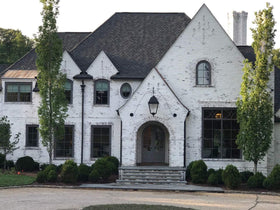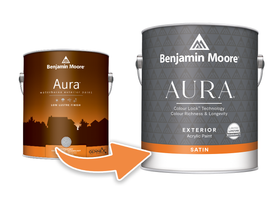
Exterior Painting In Winter, A Disaster Waiting To Happen
Exterior painting is a difficult task even during the best of summer days, but it’s even more difficult during our frigid Toronto months. Most professional painters simply refuse exterior painting jobs in the winter and for good reason. Turns out it isn’t the working conditions that make professionals shy away, it’s the poor results. The cold and varying moisture levels can wreak havoc on your work, cracking and even changing colour, so it’s important to either wait for summer or be prepared with more than just a winter jacket.
Today we look at the two biggest challenges for winter painting and offer some painting tips to get the job done. Just be aware, if you can leave the job until summer, spending the winter home decorating is a better choice, and has more stable results.
The Problem with Painting in Winter
Moisture and temperature are the two biggest problems facing the aspiring winter painter, but both can be controlled. Temperature is the most obvious concern, not simply because it makes the paint thicker. Curing is a delicate process and cold temperatures makes the paint cure slowly and unevenly. Latex paint has an especially difficult time in the cold because the latex particles will harden, leaving you with wasted efforts. You’ll find the application process is also more difficult with thicker paint, another result of cold products. Even spray paint is known to crack in the cold.
Even worse than the cold is dramatic changes in temperature. While you may be tucked away in your warm bed, your paint is left out in the cold and paint hates cooling down. As the sun goes down, the paint will become increasingly viscous, but not evenly. Changing temperatures lead to uneven curing, so the paint will start to blister and peel because it can’t bond to the house properly. Painting vinyl siding can be especially difficult because vinyl shrinks dramatically in cool temperatures and expands in the heat.
Moisture is the second major problem for winter painting. Rain and dew are constant problems, so painters have to be extra careful to minimize moisture to let the paint cure on its own year round. Moisture in the winter, however, is even harder to control.
Winter drizzle and drifting snow will react with your paint in ways that can and will look pretty terrible. Dampness and condensation can lead to discolouring and blushing, ruining all of your outdoor work. With the weather being that much more unpredictable in winter, moisture becomes more difficult to control as well. As temperatures hover around zero, the water can expand, contract, and bond with your paint as well, leading to discolouring and improper drying.
All of these problems can lead to a poorly performing paint job that needs to be redone come summertime.
The Solutions
Cold temperature paints can help with the chilly weather, being specially designed to cure at lower temperatures, usually at around 1.5 degrees Celsius instead of above 10c. A high quality product recommended by your local paint store is a good place to start.
You’ll also have to take your time. Colder paint takes much longer to cure, so make sure you give it longer than usual between coats. Alkyd paints in particular will need time, so give the paint ample time between coats.
We can’t control the weather, but we’re pretty good at predicting it, so check the forecast for both temperature and moisture before starting. There’s no point in painting if rain is on the way, and stretches of relatively stable temperatures are highly recommended.
Make sure to paint between 10 AM and 2 PM to help with the application. Paint thickens in the cold, so it’ll be more malleable during midday. As for mixing, your project will take over some of your more heated areas. Paint is harder to mix when cold, so mix it at room temperature.
If exterior painting has to happen in the colder months, minimize the elements you can control. Scaffolding and controlling the environment can help as well. Tarps and heaters can give you that extra bit of control as well. So, if you just have to get the job done, make sure you’re prepared. And an extra pair of socks will go a long way.
For more advice on getting your winter painting projects completed, give us a call.



